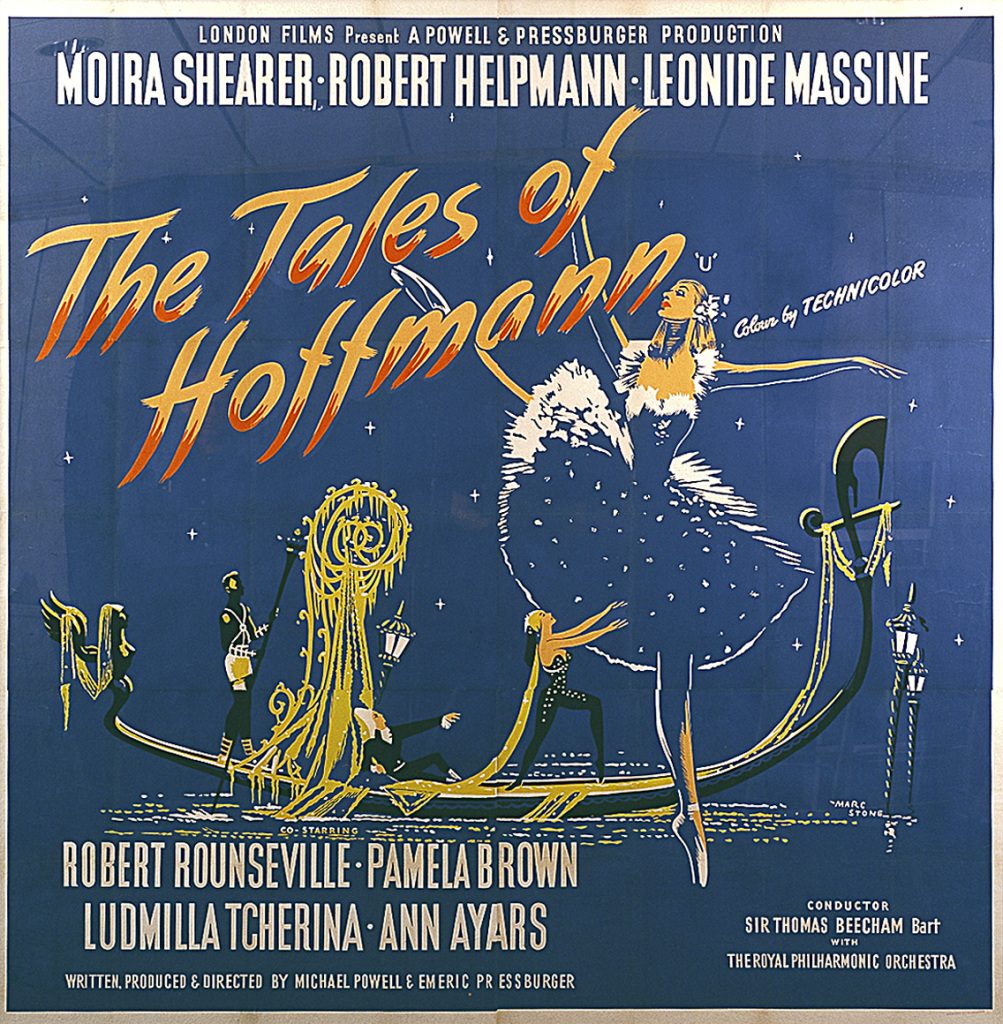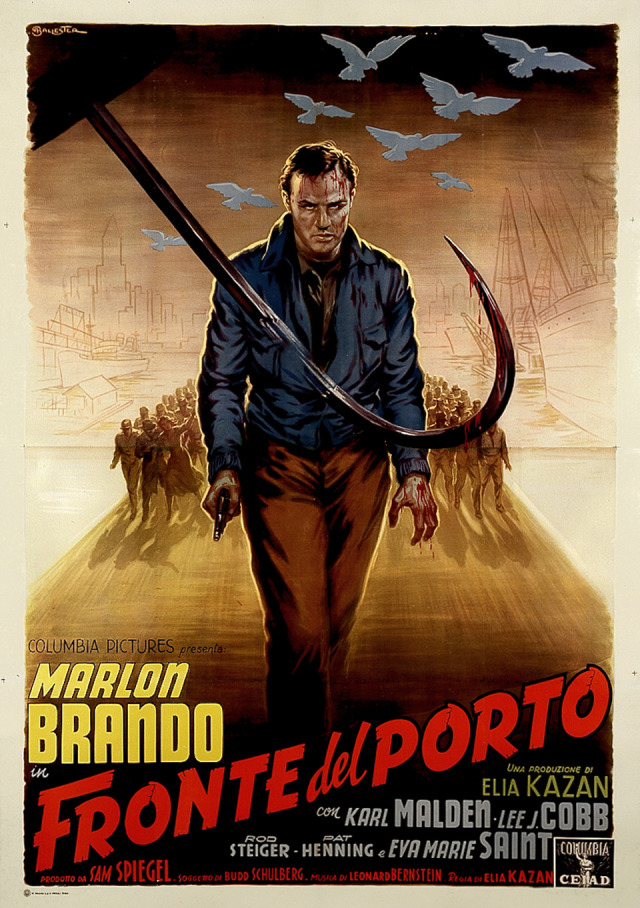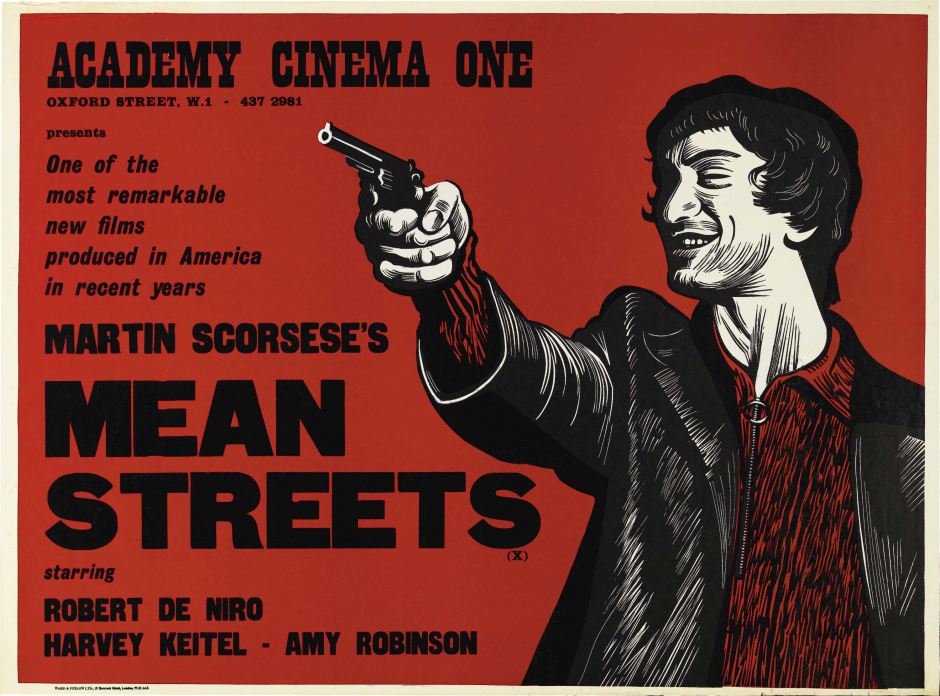When Martin Scorsese isn’t making films, he’s busy preserving them, from helping fund the restoration of classics to collecting the ephemera of his youth, especially posters. A selection of his movie poster collection, representing the height of film advertising from the 1930’s to the 1960s, currently hangs at MoMA through October 25, 2015.
The power that a poster held in the imagination decades ago should not be understated. For many it was the only knowledge they had about the film they were about to see, and many artists, hired in house by the studios, hyped up the sexiest parts of the films. It sold tickets.
The MoMA exhibit is centered on the billboard sized poster for Powell and Pressburger’s Tales of Hoffmann (1951), a stunning work when seen large. (For an understanding about the impressive size of most posters, check out this graphic.)
It’s only because of collectors like Scorsese and Ira. M. Resnick (for whose book Scorsese wrote an introduction) that the artists behind these posters have been named and recognized.
Although the MoMA web page promoting the exhibition is surprisingly stingy when it comes to naming all the artists in the show, some internet sleuthing brings up some names. The illustrator behind the Hoffmann poster, Marc Stone, was also a painter of World War II propaganda posters in the UK.
The minimal, Risko-esque rendering of Veronica Lake for Sullivan’s Travels (1941) is credited to Maurice Kallis, though an anonymous comment on the movie poster blog Citizen K. credits it to Fritz Siebel, the commenter’s father. Siebel, who immigrated to the U.S. from Vienna, wound up illustrating A Fly Went By for Dr. Seuss’ children’s book imprint and creating the famous Yul Brynner-lookalike and cleaning product mascot Mr. Clean.
René Péron, who created the beautiful Expressionistic design for Erich von Stroheim’s The Lost Squadron (1932) started his career with posters for silent classics like Abel Gance’s Napoleon and Carl Theodor Dreyer’s The Passion of Joan of Arc (1928). But he’s probably best known for the iconic caricature of Jacques Tati gracing the poster for Mr. Hulot’s Holiday.
Both the poster for Powell and Pressburger’s Black Narcissus and Kazan’s On the Waterfront are by one of the Italian kings of movie posters, Anselmo Ballester. His style is lurid and pulpy, and if there is one dame in distress in a movie, he would make her the selling point of the poster. He was also known for his love of Rita Hayworth, for whom he would produce his best work. (Just look at this poster for Salome, which is way more interesting than the picture it represents.)
Lastly, Scorsese has added one of his own film’s posters: Peter Strausfeld’s stunning woodblock poster for Mean Streets. The British artist had a very particular style (text on one side, graphic on the other), and was hired by the Academy Cinema in London as their designer. (Now, *that’s* a job.)
The fact that we can watch trailers on our televisions and now iPhones has long diminished the power of the poster. However, there are still signs of life in the industry, and the amount of artists creating beautiful limited edition prints of posters for their favorite films increases every year.
via Quartz
Related content:
50 Film Posters From Poland: From The Empire Strikes Back to Raiders of the Lost Ark
100 Greatest Posters of Film Noir
Martin Scorsese Reveals His 12 Favorite Movies (and Writes a New Essay on Film Preservation)
Gaze at Global Movie Posters for Hitchcock’sVertigo: U.S., Japan, Italy, Poland & Beyond
The Strange and Wonderful Movie Posters from Ghana: The Matrix, Alien & More
Ted Mills is a freelance writer on the arts who currently hosts the FunkZone Podcast. You can also follow him on Twitter at @tedmills, read his other arts writing at tedmills.com and/or watch his films here.







Leave a Reply